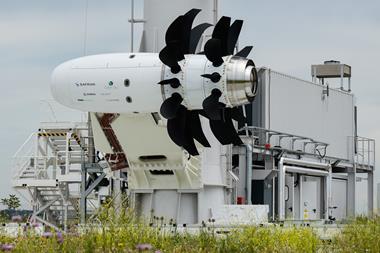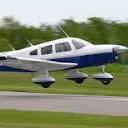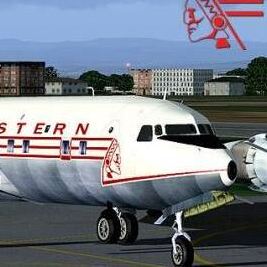

https://d3lcr32v2pp4l1.cloudfront.net/P ... 3_crop.jpg
https://www.flightglobal.com/flight-int ... 96.article
Is this finally that design's vindication and would it mean its eventual widespread application? What about the noise issue before?

Moderators: richierich, ua900, PanAm_DC10, hOMSaR



LCDFlight wrote:Can somebody explain the difference between turboprop and UDF please? They appear to have different configuration, but I have no idea the advantages of UDF over turboprop.
IAHFLYR wrote:LCDFlight wrote:Can somebody explain the difference between turboprop and UDF please? They appear to have different configuration, but I have no idea the advantages of UDF over turboprop.
The first article is fairly lengthy, but should help.
https://www.britannica.com/technology/j ... an-engines
https://www.grc.nasa.gov/WWW/k-12/airplane/aturbp.html

LCDFlight wrote:IAHFLYR wrote:LCDFlight wrote:Can somebody explain the difference between turboprop and UDF please? They appear to have different configuration, but I have no idea the advantages of UDF over turboprop.
The first article is fairly lengthy, but should help.
https://www.britannica.com/technology/j ... an-engines
https://www.grc.nasa.gov/WWW/k-12/airplane/aturbp.html
Thanks, not too lengthy, helped a lot.
It still leaves me wondering, why did it take >50 more years to perfect UDF technology (assuming we are near that today), after turboprop was essentially perfected 50 yrs ago? Is there a materials science issue, or was the aerodynamics of the scimitar-shaped UDF fan blades that difficult?


Starlionblue wrote:LCDFlight wrote:IAHFLYR wrote:
The first article is fairly lengthy, but should help.
https://www.britannica.com/technology/j ... an-engines
https://www.grc.nasa.gov/WWW/k-12/airplane/aturbp.html
Thanks, not too lengthy, helped a lot.
It still leaves me wondering, why did it take >50 more years to perfect UDF technology (assuming we are near that today), after turboprop was essentially perfected 50 yrs ago? Is there a materials science issue, or was the aerodynamics of the scimitar-shaped UDF fan blades that difficult?
AFAIK the big difference is supersonic tip speeds on UDFs. Not sure if this is in all flight regimes or only at high thrust.
The aerodynamics are indeed difficult. However, I don't think that is the big hurdle. UDFs have been unacceptably loud, for starters. The other issue is the energy level of a blade if it detaches. This would be much higher than the propeller equivalent.

kitplane01 wrote:Starlionblue wrote:LCDFlight wrote:
Thanks, not too lengthy, helped a lot.
It still leaves me wondering, why did it take >50 more years to perfect UDF technology (assuming we are near that today), after turboprop was essentially perfected 50 yrs ago? Is there a materials science issue, or was the aerodynamics of the scimitar-shaped UDF fan blades that difficult?
AFAIK the big difference is supersonic tip speeds on UDFs. Not sure if this is in all flight regimes or only at high thrust.
The aerodynamics are indeed difficult. However, I don't think that is the big hurdle. UDFs have been unacceptably loud, for starters. The other issue is the energy level of a blade if it detaches. This would be much higher than the propeller equivalent.
I’m interested in this. Why does a UDF fan blade have more energy than a full-size propeller blade? I understand the UDF fan spins faster, but how much faster? Because a propeller blade is a much larger piece of kit.
Devilfish wrote:Is this finally that design's vindication and would it mean its eventual widespread application?
Starlionblue wrote:AFAIK the big difference is supersonic tip speeds on UDFs. Not sure if this is in all flight regimes or only at high thrust.

LMP737 wrote:What MD found out many years ago that while the UDF is great on gas, the noise and vibration were just horrendous.
CowAnon wrote:^^^Untrue. The UDF was quieter than existing turbofans at the time, which reporters noted when they were able to view or ride test flights. Vibration was experienced but was described as minor.
CowAnon wrote:I hope so, but the timing still appears far away:



Devilfish wrote:Starlionblue wrote:AFAIK the big difference is supersonic tip speeds on UDFs. Not sure if this is in all flight regimes or only at high thrust.
So, it's the blade tip speed that was causing the excessive noise level and not the counter rotation?
https://leehamnews.com/wp-content/uploa ... scaled.jpg
Interesting that the engine is hanging from the tailplane in this configuration.LMP737 wrote:What MD found out many years ago that while the UDF is great on gas, the noise and vibration were just horrendous.
I think Boeing came to pretty much the same conclusion.....
Invited media could be relied upon to provide a positive 'spin'...a more recent report was guardedly optimistic about it.....
https://www.imeche.org/news/news-articl ... ome-viable
Quote:
"Contra-rotating open rotor engines that are quieter than today’s turbofan engines could be developed in the near future, one of the top engineers at Rolls-Royce has predicted.
Speaking at a conference in London on disruptive aerospace technologies, organised by the IMechE, Parker said: 'We believe we can make an open rotor significantly quieter than today’s aircraft and significantly more efficient. We are talking about an open rotor that could be 13dB quieter than today’s A320, which I think should be quiet enough for most people.'"
I believe RR is part of the industry group working on the EU Clean Sky project.CowAnon wrote:I hope so, but the timing still appears far away:
Indeed...just imagine if the next generation ATR would look like this.....
https://leehamnews.com/wp-content/uploa ... roject.jpg

mikeinatlanta wrote:Motors hanging off the horizontal stab make great desktop models. Real planes not so much.

Higher RPM. That being said, it isn't that much higher. A turboprop prop maxes out under 2000rpm. A turbofan fan spins at around 3000rpm.
CowAnon wrote:Well the An-180 and Clean Sky setup doesn't look as strange as engines embedded in the vertical stabilizer, but ugliness didn't stop their presence on trijet airplanes.
CowAnon wrote:This apparently was one of McDonnell Douglas's earlier concepts for a DC-10 derivative:

CowAnon wrote:mikeinatlanta wrote:Motors hanging off the horizontal stab make great desktop models. Real planes not so much.
Well the An-180 and Clean Sky setup doesn't look as strange as engines embedded in the vertical stabilizer, but ugliness didn't stop their presence on trijet airplanes.
This apparently was one of McDonnell Douglas's earlier concepts for a DC-10 derivative:
From “Props” for McDonnell Douglas: The Unducted Fan Projects That Never Took Off (avgeekery.com).

CowAnon wrote:Higher RPM. That being said, it isn't that much higher. A turboprop prop maxes out under 2000rpm. A turbofan fan spins at around 3000rpm.
Not quite that much. The GE36 UDF had a fan blade tip speed of 780 feet per second (238 meters per second) at cruise and 850 fps (259 mps) at takeoff (UDF design report, p. 141).
[list][*]Since the length the blade tip travels in one revolution is the fan circumference, you have (blade tip distance traveled per one revolution) = 2 * pi * (fan radius) = pi * (fan diameter).
WIederling wrote:CowAnon wrote:Higher RPM. That being said, it isn't that much higher. A turboprop prop maxes out under 2000rpm. A turbofan fan spins at around 3000rpm.
Not quite that much. The GE36 UDF had a fan blade tip speed of 780 feet per second (238 meters per second) at cruise and 850 fps (259 mps) at takeoff (UDF design report, p. 141).
- Since the length the blade tip travels in one revolution is the fan circumference, you have (blade tip distance traveled per one revolution) = 2 * pi * (fan radius) = pi * (fan diameter).
The blade tip path is not a circle but a spiral. ( vector addition: (c)ircumfenretial path + (p)rogress in the axis of rotation. = root( c² + p² )


Devilfish wrote:So...the target is mid-2030s EIS...that is 45 years at least after GE announced the UDF for 1990.....
https://www.flightglobal.com/engines/cf ... 41.article
Wonder what new airplane launches on the horizon would benefit from this 20% better fuel burn?.....

LCDFlight wrote:Can somebody explain the difference between turboprop and UDF please? They appear to have different configuration, but I have no idea the advantages of UDF over turboprop.
delta-flyer wrote:LCDFlight wrote:Can somebody explain the difference between turboprop and UDF please? They appear to have different configuration, but I have no idea the advantages of UDF over turboprop.
It's a fairly hazy line, but a fan involves a "greater" number of blades, while a prop involves "lesser" number blades. I can't really define these terms, but let's say props have 3-6 blades, and fans have more than 6 blades. The UDF name came from taking the shroud off a ducted fan, or "unducting" it, so the fan retains multiple small curved blades, spaced close together. So remove the duct (or shroud) of a ducted fan engine, and you now have the unducted fan.
Interestingly, the newer props are also beginning to resemble fan blades, as for example the A400M turboprop has multiple blades that are curved, which are beginning to resemble the "unducted fan" but placed at the front of the engine.
The newest proposed unducted fan has the fans in the front. This design allows the engines to be mounted more conveniently on wings rather than the original UDF's being mounted on the rear of the fuselage. In my opinion, it is not a good idea to attach a UDF close to the fuselage, as the air turbulence from the fan blades cause vibrations on the fuselage, which will cause the aluminum skin to fatigue.
I'm very curious to see how the new incarnation of the UDF, with the fans forward, will work out in testing.
744SPX wrote:delta-flyer wrote:LCDFlight wrote:Can somebody explain the difference between turboprop and UDF please? They appear to have different configuration, but I have no idea the advantages of UDF over turboprop.
It's a fairly hazy line, but a fan involves a "greater" number of blades, while a prop involves "lesser" number blades. I can't really define these terms, but let's say props have 3-6 blades, and fans have more than 6 blades. The UDF name came from taking the shroud off a ducted fan, or "unducting" it, so the fan retains multiple small curved blades, spaced close together. So remove the duct (or shroud) of a ducted fan engine, and you now have the unducted fan.
Interestingly, the newer props are also beginning to resemble fan blades, as for example the A400M turboprop has multiple blades that are curved, which are beginning to resemble the "unducted fan" but placed at the front of the engine.
The newest proposed unducted fan has the fans in the front. This design allows the engines to be mounted more conveniently on wings rather than the original UDF's being mounted on the rear of the fuselage. In my opinion, it is not a good idea to attach a UDF close to the fuselage, as the air turbulence from the fan blades cause vibrations on the fuselage, which will cause the aluminum skin to fatigue.
I'm very curious to see how the new incarnation of the UDF, with the fans forward, will work out in testing.
Actually, fan blades are beginning to resemble turboprops. NASA's ATP program had swept blades -much more radically swept than even any current turbofan- in the 1970's. Turbofans only started to incorporate swept blades in the early 90's.
CFM's new open rotor is technically a turboprop as it has a gearbox, just like P&W's 578DX.
I've always thought using the number of blades as the differentiator between open rotor and turboprop made no sense.
As for the difference between propfan/UDF/open rotor nomenclature, I would just call them all turboprops as they are all evolutions the Advanced Turboprop Program. To put it another way, the open rotor concept came from the turboprop, not the turbofan. That being said one could fairly argue that to be a turboprop you have to have a gearbox, at least that is the definition used since the late 80's and GE's gearbox-less UDF.
CowAnon wrote:A tweet from the author of the FlightGlobal article says CFM downplayed the role of the gearbox but noted that the details were proprietary. I interpret that as saying CFM doesn't have a good gearbox solution and has a lot of work ahead of it. If they really have improved the noise performance of the rotating part of the fan as much as CFM says, I would still consider trying to go with contra-rotating direct-drive turbines. Then you could reduce the fan diameter to maybe 110 to 120 inches. If you assume that roughly half of that diameter would go above the wing and half underneath, then it would fit on an existing 737 without any clearance issues. (The single-fan version of the RISE would already be mountable on an A320 under that assumption.)
The Leeham article talks about how the diameter reduction affected other aspects of engine performance:The second advantage is the engine is less sensitive to higher speeds. The reduced diameter reduces the engine’s bypass ratio (in technical speak it increases the specific thrust). It puts the RISE engine’s high-speed characteristics closer to high bypass turbofans, which in turn makes the engine suitable for airliners that fly longer routes, up to our typical single-aisle routes.
CowAnon wrote:A few tidbits from the FlightGlobal article:Fan diameter has been significantly reduced, to 144-156in (365-396cm) – in line with the external diameter of a current-generation single-aisle engine – enabling installation on a narrowbody-size aircraft.
...
The RISE demonstrator engine will be sized to deliver 30,000lb of thrust (133kN), says Dijoul, but “we have flexibility on that”. Cruise speeds equal to current levels “and even a little bit further” will be achievable with the open rotor design.
...
The UDF demonstrator in the late 1980s used 140-inch diameter contra-rotating fans to produce 25,000 pounds of thrust. I'm not sure how the RISE demonstrator will be able to produce more thrust with just the stator vanes and a slightly higher diameter without increasing noise, since the noise emission increases with blade loading. Maybe they increased the number of fan blades and widened the chords? But that was already done in the 1980s, so I don't know how much surface area can be added without choking off the airflow. Or maybe the stator vanes muffle the noise?

Devilfish wrote:So...the target is mid-2030s EIS...that is 45 years at least after GE announced the UDF for 1990.....
https://www.flightglobal.com/engines/cf ... 41.article
Wonder what new airplane launches on the horizon would benefit from this 20% better fuel burn?.....


DeltaMD95 wrote:In March of 2021, Boeing purchased two former DL MD-90s from the boneyard in BYH and flew them to VCV (N962DN & N908DA).
It’s plausible these aircraft were acquired to be used as testbeds. Might an updated UDF concept be a conceivable purpose for these aircraft?

CowAnon wrote:Scott Hamilton is calling for regulation to get the industry to start using open rotors:
https://leehamnews.com/2021/10/11/pontifications-biofuels-hydrogen-batteries-are-nice-but-far-in-the-future-solution-exists-now/
He's mostly focusing on short-haul flights up to 2,500 miles, but there's an old ICAS-published study from 1982 that shows the fuel reductions increasing for flights beyond 2,000 nautical miles. It pegs the fuel savings for a long-haul 6,000-nmi flight at 20 percent for Mach 0.8, 30% for M0.7, and over 40% for M0.6.
http://www.icas.org/ICAS_ARCHIVE/ICAS1982/ICAS-82-4.5.2.pdf#page=4 (zoom in on figure 5)
WIederling wrote:CowAnon wrote:Higher RPM. That being said, it isn't that much higher. A turboprop prop maxes out under 2000rpm. A turbofan fan spins at around 3000rpm.
Not quite that much. The GE36 UDF had a fan blade tip speed of 780 feet per second (238 meters per second) at cruise and 850 fps (259 mps) at takeoff (UDF design report, p. 141).
[list][*]Since the length the blade tip travels in one revolution is the fan circumference, you have (blade tip distance traveled per one revolution) = 2 * pi * (fan radius) = pi * (fan diameter).
The blade tip path is not a circle but a spiral. ( vector addition: (c)ircumfenretial path + (p)rogress in the axis of rotation. = root( c² + p² )

CowAnon wrote:This apparently was one of McDonnell Douglas's earlier concepts for a DC-10 derivative:
CowAnon wrote:This apparently was one of McDonnell Douglas's earlier concepts for a DC-10 derivative:

Boeing also evidently looked in a UDF version of the 747-500:
From https://www.youtube.com/watch?v=KybOWKxkObw
Very cool, but wouldn't moving the engines aft of the wing require moving the wing further aft to accommodate the new CG?
For those in the plane the sound issue (supersonic tips) only needs to take account of the speed of the rotation as they have the same forward speed.
I'd imagine on the ground the relative motion of the tip to the observer would give a smaller and smaller zone of "Booms" the closer to M1 that the tips became. Oh the joys of rotating sound sources!
On the topic of tip noise, has there even been experiments with "propeller sharklets"?
The idea being that you could get the same thrust from a smaller diameter and thereby lowering the supersonic tip problem. I could also imagine the turbulence from the tip becoming less strong.
Problems I could imagine is the asymetric mass and profile causing vibrations.
SteelChair wrote:I don't see it happening any other way. Today's airline executives are controlled by the low cost competition. They simply cannot afford to invest in new technology. They can barely pay for rehashed old designs. And post Covid, their balance sheets are a wreck.